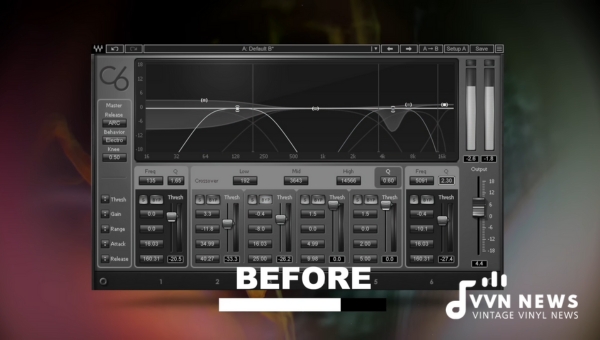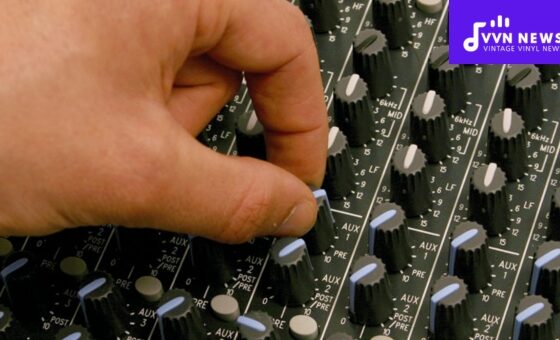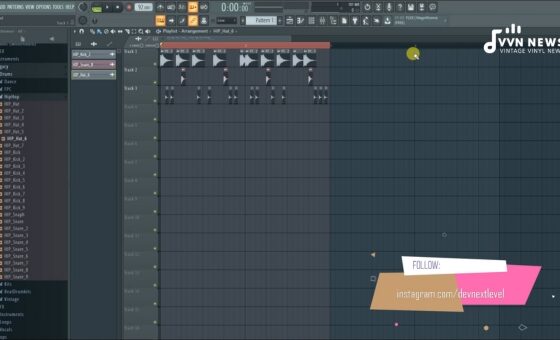In my many years of delving into the intricacies of sound engineering, one topic that has consistently piqued my interest is multiband compression.
This post will be dedicated to a deep dive into this remarkable tool in the world of audio processing, exploring its ins and outs and perhaps even demystifying its complex operations.
I hope this discussion on multiband compression will not only enlighten readers but also inspire those of you who may be on the brink of giving up on perfecting your mixing skills.
Known for producing sonic miracles when applied correctly, its mastery is an achievement well worthwhile. So, let’s walk together on this path to unraveling how we can create the magical symphony that resides in precise and well-balanced sound production.
What is Multiband Compression?
Multiband compression is a type of audio processing that segregates an audio signal into various frequency bands. Each band undergoes independent compression, allowing sound engineers to compress different frequencies individually.
This provides greater control over an audio signal’s dynamic range – which can enhance the nuance and richness of music, podcasts, or other sound files. It’s often used in mastering audio to improve sound quality and balance across different frequencies.
Elements of Multiband Compression
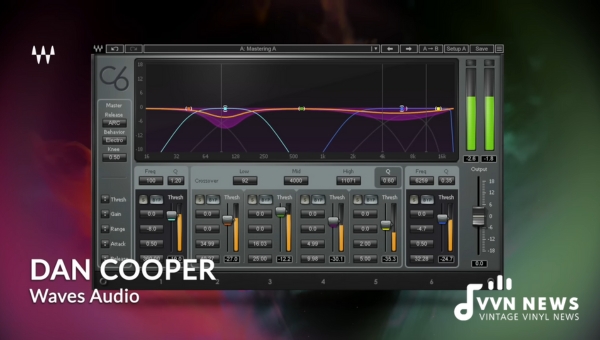
Embedded in the DNA of multiband compression are key elements that together create its magic. Understanding these components is the stepping stone to mastering this powerful tool.
Points of Crossover
The “Points of Crossover” refer to the frequencies at which your signal divides into separate bands. These crossover points define how wide or narrow your bands are and hence determine what range of frequencies each band encompasses.
For example, in a three-band layout, you might set crossovers at 200 Hz and 2 kHz, thus creating low, mid, and high-frequency bands.
Meter for Gain Reduction
Just like single-band compressors, multiband compressors have meters for gain reduction. The meter indicates how much compression each band is applying. Thus, it lets you visually track the level of reduction across different frequencies.
Compensation Gain
The compensation gain (or makeup gain) feature allows you to increase the output level of a band after it’s been compressed. It ensures that while controlling dynamics, your audio does not lose volume perceptually. Thus, you can maintain a consistent loudness throughout your mix.
Knee Aspect
The ‘Knee’ setting determines how gradually or abruptly compression kicks in once the signal crosses the threshold point. A softer knee results in a subtler onset and smoother transitions, perfect for rounds off harsh peaks and preserving sonic integrity.
Threshold Point
The threshold point signifies the level where compression begins to act on your signal. By adjusting this parameter for each band separately, you control which frequency ranges are treated more heavily than others based on their loudness levels.
Release Functionality
Release time dictates how long it takes for the compression to stop working after the signal drops below the threshold again. Setting optimal release times ensures organic recoveries of sound levels and avoids distortion from rapid pressure changes.
Attack Feature
Attack time is another crucial parameter that establishes when precisely the compressor starts working once it identifies an over-threshold signal segment. A faster attack clamps onto transient details more quickly while slower options allow some transients to pass through unprocessed for more lively dynamics.
Analyze The Spectrum
Most multiband compressors today offer real-time spectrum analyzers that allow you to view changes in frequency content visually as your audio processes through multiband stages. This feature aids greatly in customizing band settings accurately according to spectral clues.
Frequency Band Sections
Last but not least, we have Frequency Band Sections – tailored restrictors assigned different parts of frequency spectrum identified by crossover points set by user themselves – be it low-end punch or high notes highlights!
Understanding these elements will help users operate multiband compressors more effectively while grasping their unique potential fully so they can make an impactful difference in their mixes – whether it’s achieving harder hitting percussions or achieving smoother vocal tracks!
Multiband Compression Vs parametric EQ
One common misunderstanding is that multiband compression and parametric equalization (EQ) are the same thing, but this is actually a misconception.
Multiband compression and parametric EQ can both manipulate different frequencies in an audio signal, however, they achieve this in fundamentally different ways.
While they might appear to have similar functionalities, understanding their unique roles can drastically enhance your production process.
Multiband Compression, foremostly, targets the dynamic range of your audio within specific frequency bands. It enables you to control how soft or loud these bands get.
It’s not changing the tone – rather it identifies an instance when a predetermined volume level in a specific frequency range is exceeded, acting only at that moment.
Parametric EQ, on the other hand, primarily adjusts the balance of frequencies. It boosts or cuts volume levels at specific frequencies to shape the overall tone, making certain elements of your mix shine through or recede into the background throughout the entirety of the song – not just when certain volume thresholds are exceeded.
Use EQ if you want more (or less) of a particular frequency. Use Multiband compression if you need to control how loud these frequency regions actually get. This distinction will guide you in making smarter and more efficient decisions in sound mixing and mastering.
Also Read: Stereo Compressors Explained [How They Shape Your Audio Experience]
Advantages of Multiband Compression

Let’s look at the numerous advantages that multiband compression has to offer.
Precision and Control
Multiband compression raises the bar on precision. It provides control over separate frequency bands, helping to maintain the balance and integrity of each frequency range within your mix.
The ability to apply varied settings in distinct areas allows these individualized compressors to work rhythmically in harmony with your track.
Mixed Dynamics Management
With multiband compression, managing mixed dynamics in a track becomes less complex. For instance, you may have a bass guitar part where the lower notes are much louder than the upper notes—using a standard compressor might make the upper notes almost inaudible when levelling the lower ones.
Multiband compressors lets you target these problematic sections without affecting other bands. So, while you’re controlling those overpowering low frequencies, your precious mid and high frequencies can keep shining!
Subtle Enhancement or Drastic Changes
Depending on how it’s applied, multiband compression can bring either subtle enhancements or drastic changes to your mix. You can highlight or downplay certain elements in a seamless way that was previously unheard of with broad-brush compressors.
Solving Frequency-Specific Problems
Ever struggled with controlling sibilance in vocal tracks or rumbling low-end frequencies in your mix? Multiband compression turns out to be an incredibly useful tool for taming such problems.
It lets you apply heavy compression only where needed without excessively compressing other possibly well-balanced areas.
Protects Integrity of Frequency Balance
Lastly, while an ordinary compressor can change the frequency balance by reducing the gain disproportionately across different frequencies, a multiband compressor protects this integrity.
Since each band can have its own settings, louder bands won’t trigger gain reduction in quieter ones. In essence, multiband compression grants creative capabilities that extend well beyond traditional dynamics control.
Its precise nature and adaptable framework enable you to enhance each element of your mix independently, crafting the perfect blend of tonal attributes and maintaining the utmost musicality throughout your project.
Application of Multiband Compression
The wonder of multiband compression lies in its versatility. Its magic works beautifully on a wide variety of instruments and vocal tracks, enhancing their quality like none other. It plays an instrumental role in mastering as well. Let’s break down the various applications:
On Vocals
The human voice has a broad frequency range and different elements of the voice often call for different treatments.
Multiband compression allows me to limit excessive sibilance (commonly found between 5k-8k Hz) or harshness without affecting the vital body and warmth of the voice.
Drum Bus
Often, we obtain drum tracks with certain frequencies that are too dominant and others that get lost because they’re too quiet.
A multiband compressor performs excellently here by homogenizing the various components, controlling boomy kicks or overly bright cymbals while bringing snare hits that were previously buried to life.
Also Read: 25 Best Drummers Of All Time [Rhythm Legends Who Drove The Beat]
Mastering
Mastering is where multiband compression can be worth its weight in gold. Mastering requires an astute ear and skills to subtly control specific frequency ranges without muddying up the mix.
With this tool, I can, for instance, slightly compress a bass-heavy mix without making the whole thing sound squashy.
Application on Synth Groups (OTT)
OTT or Over The Top compression is a style made popular by XFER’s free OTT plugin. This employs heavy multiband compression to bring out exquisite detail in your sounds, ranging from basslines to lead synths.
Mixing Bass
Basslines tend to fluctuate considerably in level, potentially causing problems, especially if you’re trying to achieve loud masters.
To combat this issue, I implement multiband compression on my bass tracks quite regularly – controlling sub-frequencies while allowing mid-range elements of the bass plenty of dynamic range.
It’s crucial to note that wrongly applied multiband compression can do more harm than good, though. Hence, diving into it is recommended only when you have comprehended what exactly you aim to achieve and how this tool will help you get there.
Also Read: How Does MP3 Compression Work? [Lossy vs Lossless Compression]
Instructions for Utilizing Multiband Compression
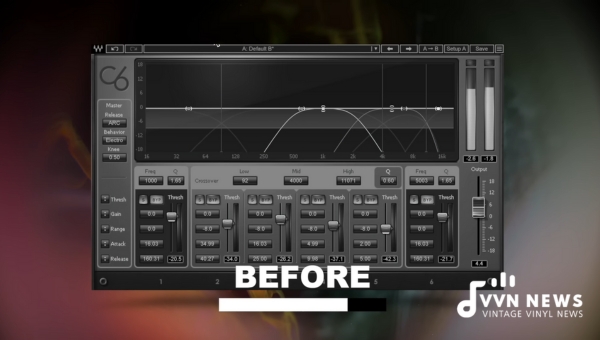
Understanding how to implement multiband compression can bring you one step closer to creative and technical mastery over your sound productions. Here’s a straightforward guide for employing multiband compression into your mixes.
Incorporate the Plugin and understand
The first step is to select your multiband compressor plugin from your Digital Audio Workstation (DAW) and add it to the track or buss you’d like to compress.
Each DAW has a different way of implementing this, so be sure to familiarize yourself with your particular software.
It is beneficial to gain a comprehensive understanding of what each control knob on your plugin does.
A typical multiband compressor provides the following controls: Threshold, which is set when the compressor starts working; Ratio, determined by how much attenuation happens; Attack and Release controls, dictating how quickly the compressor responds.
Specify Your Frequency Scope and isolate the Band
Every mix operates within a specific frequency spectrum. To tailor your compression levels accurately, you must first identify which frequency band needs adjustment.
The most effective method is by isolating individual bands within the mix and listening closely for better comprehension of their exact influence on sound results.
For those wondering how exactly one does this, most multiband compressors provide solo or mute features that can isolate individual bands. You can adjust your band frequencies using crossover controls until you’re comfortable with them.
Make Adjustments While Listening
The next step is simply applying changes as you feel are necessary while attentively listening to these isolated bands.
This could mean adjusting threshold levels to control when compression kicks in for that particular band, manipulating attack and release settings depending on how quickly you wish for compression effects to start and stop acting, or altering gain aspects if certain frequencies demand more or less emphasis.
Do remember – less can often be more with multiband compression! Subtle changes can have a substantial impact on maintaining natural sound in a mix.
De-isolate the Band and refine as needed
Once all necessary adjustments seem satisfactory, de-isolate the band(s) and listen back to your track as an entirety rather than multiple disjointed parts.
It’s essential because changes that sound good in isolation might not integrate perfectly once merged back – hence, listen back carefully!
If something doesn’t sit right, return to the previous steps and refine those settings till everything blends harmoniously.
Remember that practice makes perfect – keep trying new approaches, learn from any missteps along the way, and refactorize when required – this fitting in-process guarantees steady learning.
Experimentation will ultimately lead you towards recognizing what works best for each unique mix and refining personal flair in audio processes!
Hopefully, these guidelines aid almost any aspiring sound engineer or producer coming across this excellent tool known as Multiband Compression.
Also Read: Multiband Compression And EQ 2025 [How And When To Use?]
FAQ About multiband compressor
What exactly is a multiband compressor?
It’s a versatile audio tool that divides an input signal into several bands, allowing individual dynamic control over each frequency range.
Why use multiband compression instead of standard single-band compression?
Multiband compression offers better control by applying different gain reduction levels to each frequency band. This avoids unintentionally altering the dynamics of other sounds.
When should I consider using multiband compression?
You would typically use multiband compression when dealing with more complex audio mixes where certain frequencies need specific treatment without affecting others.
Are there drawbacks to using multiband compressors?
They can be overly complicated and time-consuming if misused, leading to issues like over-compression, unnatural-sounding mixes, or phase shifts between bands.
Should I always use a multiband compressor in my mix?
Not necessarily. While a powerful tool, like all mixing tools, its use should be dictated by the needs of your track rather than being applied as standard.
Conclusion
Understanding multiband compression can lead to unprecedented control over your mix, and the results are often incomparable.
It carries the potential for exquisite audio fine-tuning or swiftly resolving complex issues.
But balance is key when applying this tool — too much can make your track feel lifeless and over-processed.
Therefore, I would urge beginners to exercise patience and persistence while exploring this captivating aspect of sound engineering.
